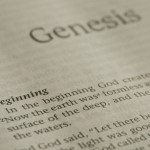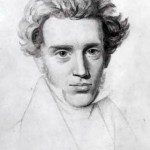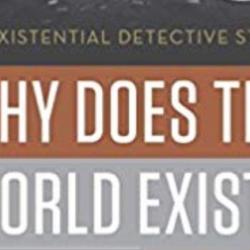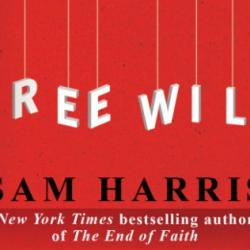A masterpiece on the parallels of doctrinal development in physics and Christianity.
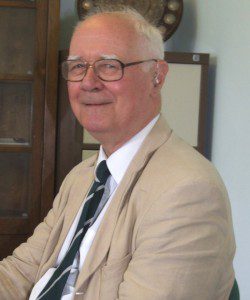 And who better to guide the journey than John Polkinghorne? If the name rings a bell, it’s because he was big time in quantum mechanics (pardon the pun). He shocked many people when he decided (after 25 years as a quantum physicist) to become an Anglican priest. As someone with an interest in science, philosophy, and theology, I was very much looking forward to reading this book and learn how a scientific-giant-turned-priest weighed in on the matter. For those also interested in the topic, Quantum Physics and Theology will not disappoint.
And who better to guide the journey than John Polkinghorne? If the name rings a bell, it’s because he was big time in quantum mechanics (pardon the pun). He shocked many people when he decided (after 25 years as a quantum physicist) to become an Anglican priest. As someone with an interest in science, philosophy, and theology, I was very much looking forward to reading this book and learn how a scientific-giant-turned-priest weighed in on the matter. For those also interested in the topic, Quantum Physics and Theology will not disappoint.
First, a word on Polkinghorne’s perspective. He’s a both a Christian and scientist and describes himself as a “critical realist”, and sees science and theology as different dimensions of truth. Both inform and complement each other. For Polkinghorne, the enterprise of science itself, and the ability to discover, speaks of an architect.
“The widespread success of science is too significant an issue to be treated as if it were a happy accident that we are free to enjoy without enquiring more deeply into why this is the case… I believe that a full understanding of this remarkable human capacity for scientific discovery ultimately requires the insight that our power in this respect is the gift of the universe’s Creator who, in that ancient and powerful phrase, has made humanity in the image of God (Genesis 1:26-27). Through the exercise of this gift, those working in fundamental physics are able to discern a world of deep and beautiful order – a universe shot through with signs of mind. I believe that it is indeed the Mind of that world’s Creator that is perceived in this way. Science is possible because the universe is a divine creation.” (Page 8)
For Polkinghorne, employing critical realism allows genuine exploration into science and theology. He pursues, he discovers, but does so with caution.
“Theologians seek to submit their thinking about the divine nature to being shaped by the character of God’s revelatory self-disclosures, while acknowledging the ineffable element of mystery present in all human encounter with the Infinite. Thus I believe theology can rightly lay claim to the pursuit of truth under the rubric of critical realism…Thus, I see there to be a cousinly relationship between the ways in which theology and science pursue truth with the proper domains of their interpreted experience. Critical realism is a concept applicable to both, not because there is some kind of entailment from method in one to method in the other – for the differences in their subject material would preclude so simple a connection – but because the idea is deep enough to encompass the character of both these forms of human search for truthful understanding.” (Page 14-15)
He then gives an insightful overview, in parallel with his thesis, on the five points of analogy between the doctrinal development of physics and Christianity. These include:
1) Moments of enforced radical revision
2) A period of unresolved confusion
3) New synthesis and understanding
4) Continued wrestling with unsolved problems
5) Deeper implications
It will not take long for the reader to see the course that Polkinghorne is charting. Physics and Christianity? A very brave position from the outset, one perhaps easily dismissed from go. And yet, for a scientific giant such as Polkinghorne, it is natural to allow leniency in surveying these parallels and joining along in the ride, considering his legacy as both a physicist and priest.
Ultimately, the central theme of the text involves the paradigm shift in physics from Newtonian physics to quantum mechanics – and the related shift from Abrahamic monotheism to the Triune God. Wave/particle duality and the concept of the Trinity were both radical paradoxes in their respective camps; physicists and theologians both had to come to a new understanding of reality. For physicists, wave/particle duality and superimposition prompted the doctrinal formation of quantum mechanics. For Christians, the events of the New Testament prompted the doctrinal formation of the Trinity through various Church Councils (Councils of Nicaea, Constantinople, and Chalcedon).
An immediate point of rebuttal comes to mind; one that Polkinghorne addresses right away in differentiating the nature of science and theology. Scientific investigation does a better job of uncovering scientific truth than theology does discovering theological truth. At first, this is left wanting and for the skeptic, a definite cop-out. But for one empathetic to a possible theological reality, there is an important point to be made: theology is not science.
“The latter is at our disposal to interrogate and put to the experimental test, but the encounter with God takes place on different terms, involving awe and worship and obedience. There is an important qualifying theological insight, called apophatic theology, stressing the otherness of God and the necessary human limitation in being able to speak adequately of the mystery of the divine nature. There are bounds to the possibilities of theological explanations.” (Page 19)
Polkinghorne continues to draw parallels between the nature of physical reality and the nature of divine reality. He provides his own critical realistic perspective on various theological points of discussion such as the historicity of the Christian faith, the Problem of Evil and Suffering, and how to interpret Scripture. He also further unpacks the problems that faced physicists in shifting from a Newtonian to quantum picture of the universe, as well as the unsolved problems in unifying General Relativity with Quantum Theory.
For many, quantum gravity and string theory will reveal the “Theory of Everything”, but for Polkinghorne this term is a misplaced one. It is merely one’s worldview. For the naturalist, the “Theory of Everything” only accomplishes its presupposition – explaining nature. But do we have reason to consider there is more to reality than just nature? For Polkinghorne, further understanding physical reality will only continue to reveal Logos, the divine and rational order behind creation. In that view, matter emerged from Mind, not the other way around, so the term “Theory of Everything” is merely one’s philosophical position or worldview.
Polkinghorne’s last words are to encourage a critical openness to both matter and Mind as well as the pursuits of science and theology as complimentary pursuits – and of course close with his “Theory of Everything”.
“Religious people who are seeking to serve the God of truth should welcome all truth from whatever source it may come, without fear or reserve. Included in this open embrace must certainly be the truths of science. In the case of scientists, the same insight implies that if they want to pursue the search for understanding through and through – a quest that it is most natural for them to embark upon – they will have to be prepared to go beyond the limits of science itself in the search for the widest and deepest context of intelligibility. I think that this further quest, if openly pursued, will take the enquirer in the direction of religious belief. It is a search for the Logos. In consequence, I believe that ultimately the cousinly relationship that we have investigated in this book find their most profound understanding in terms of that true Theory of Everything which is trinitrian theology.” (Page 109-110)
A unique, well-written text. A must have for those with an interest in physics, philosophy, and Christianity.


